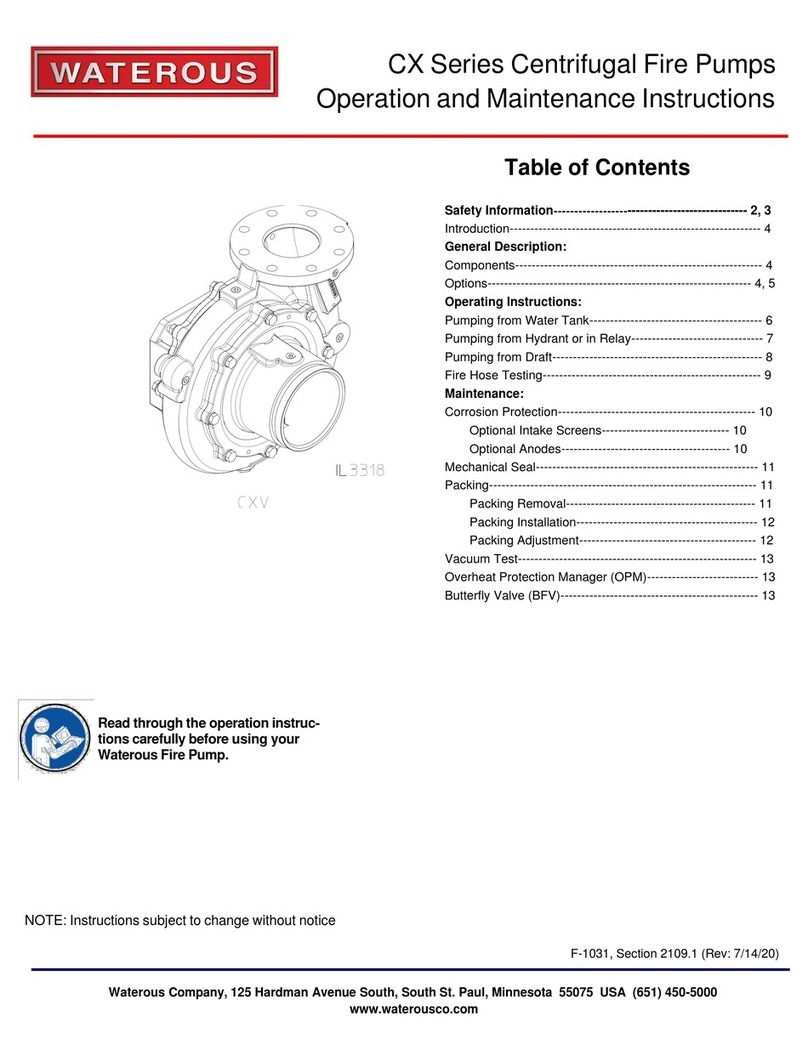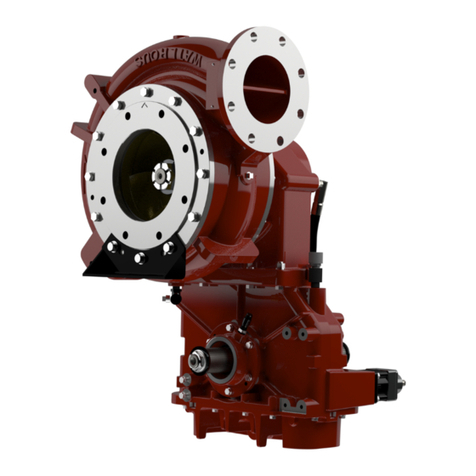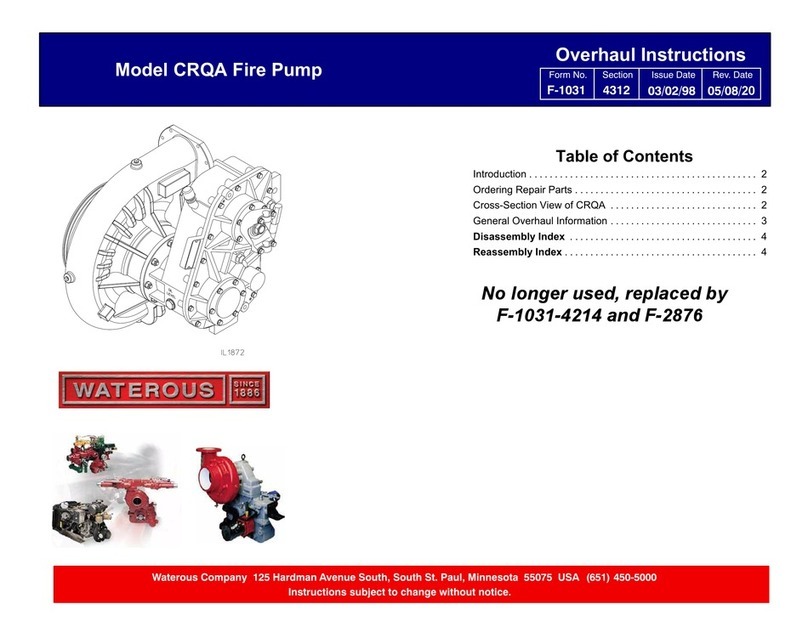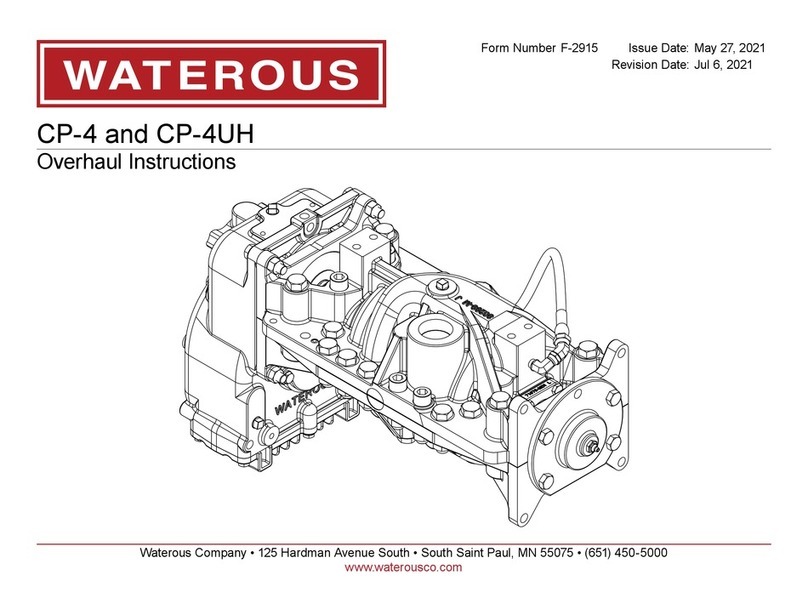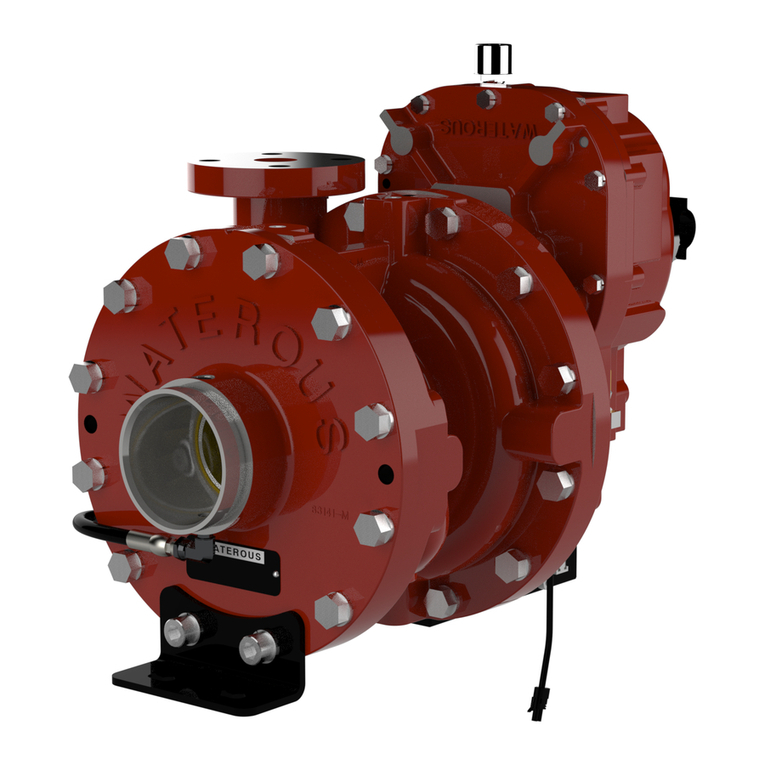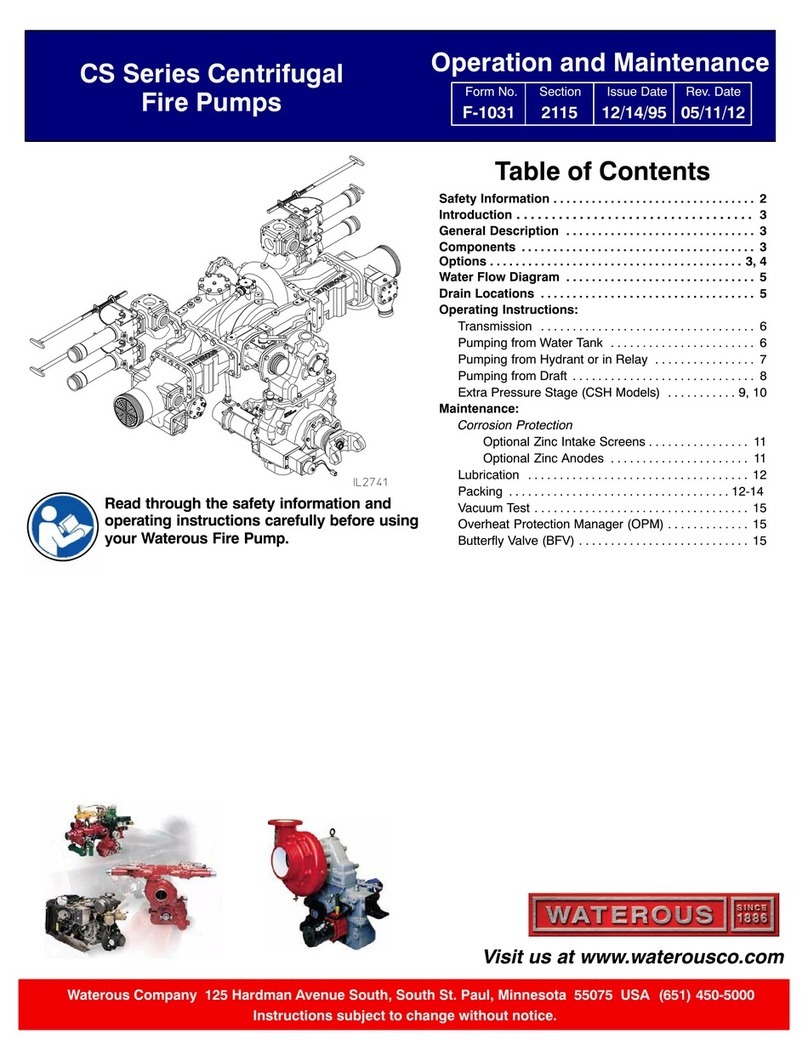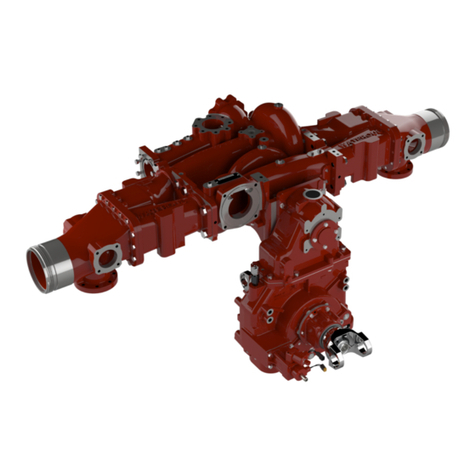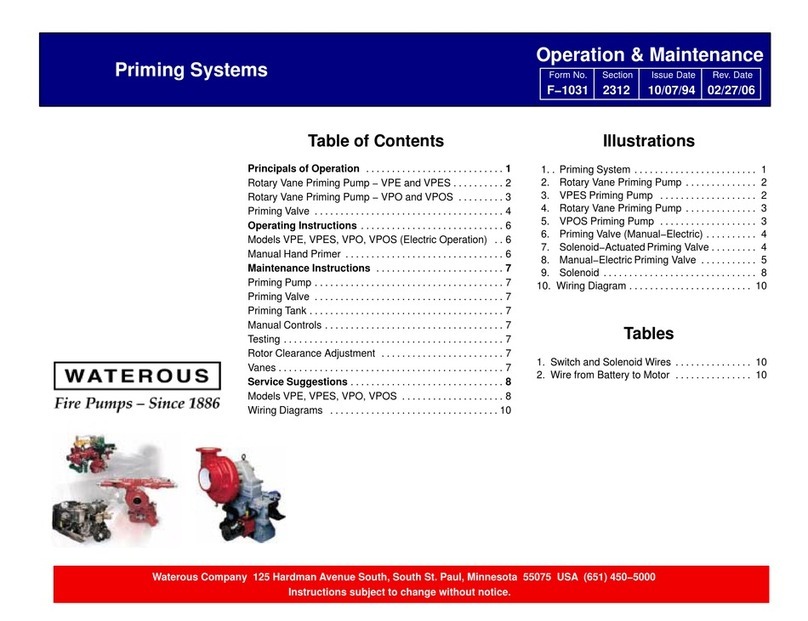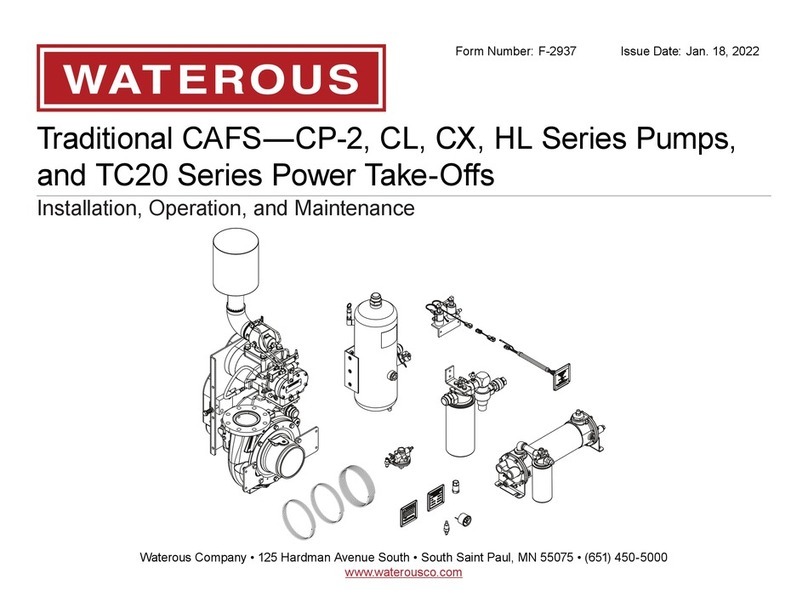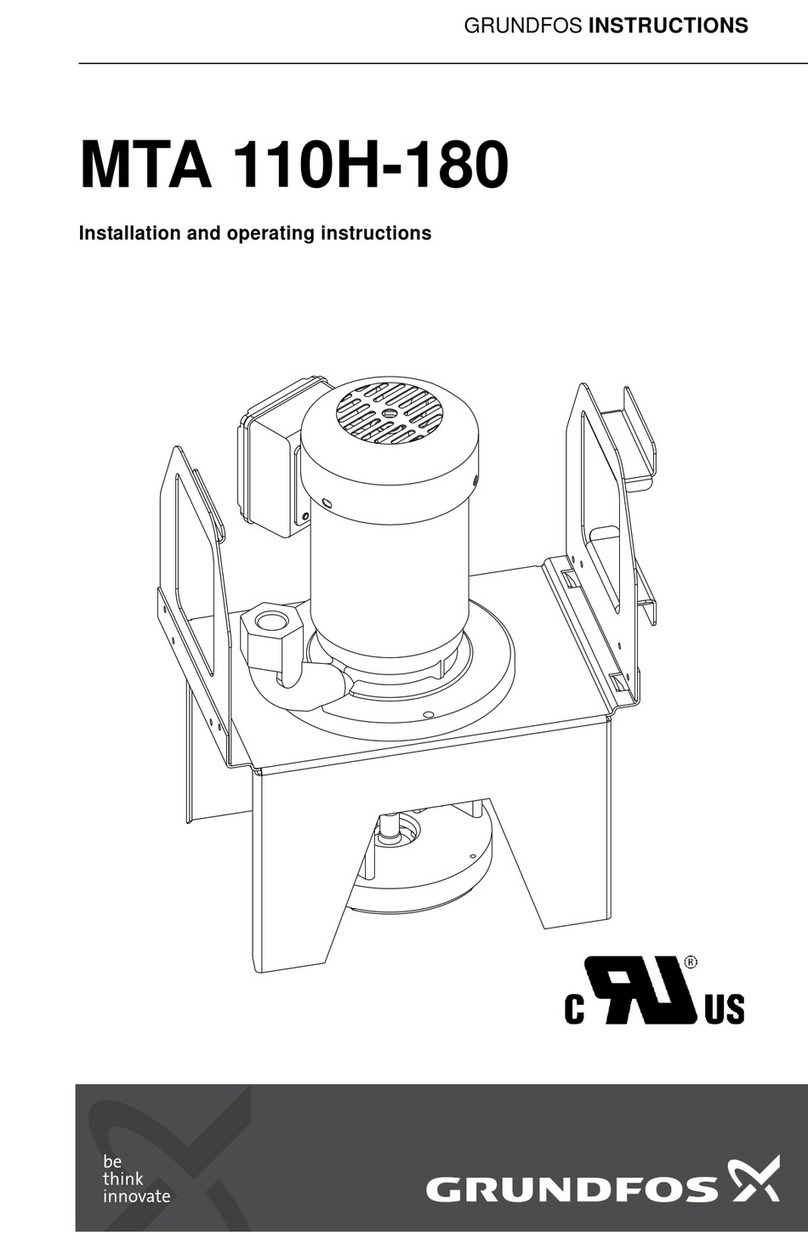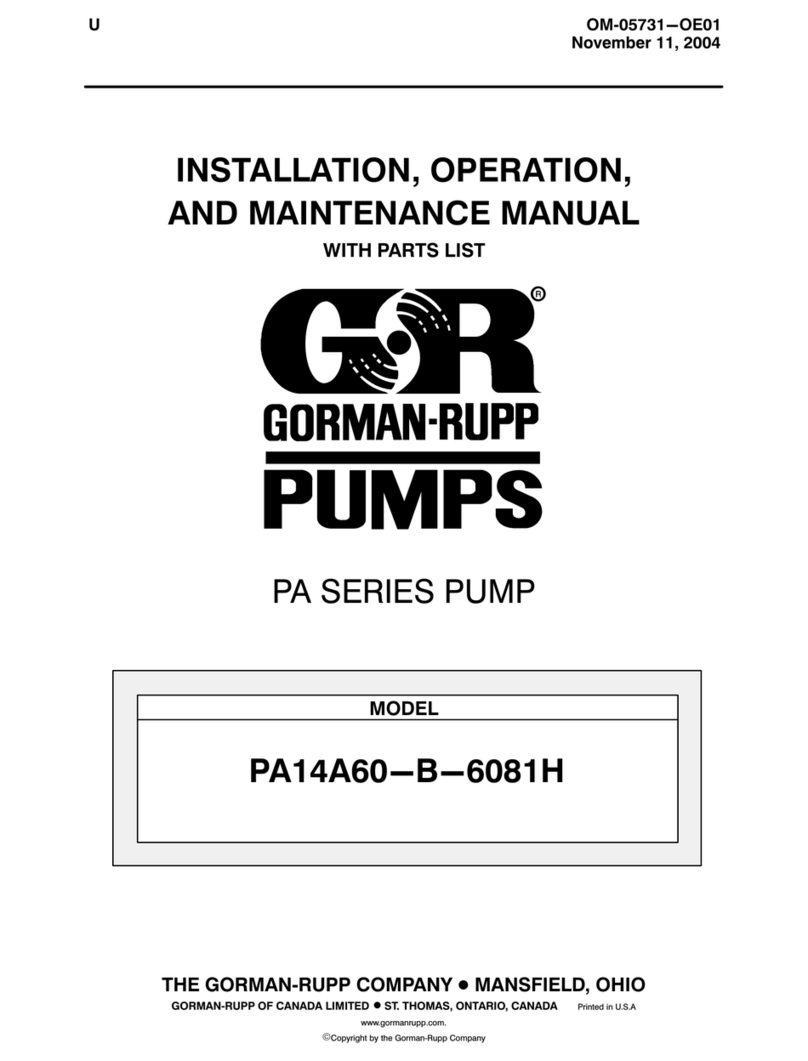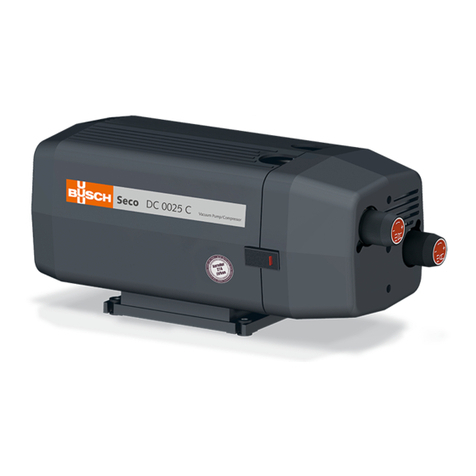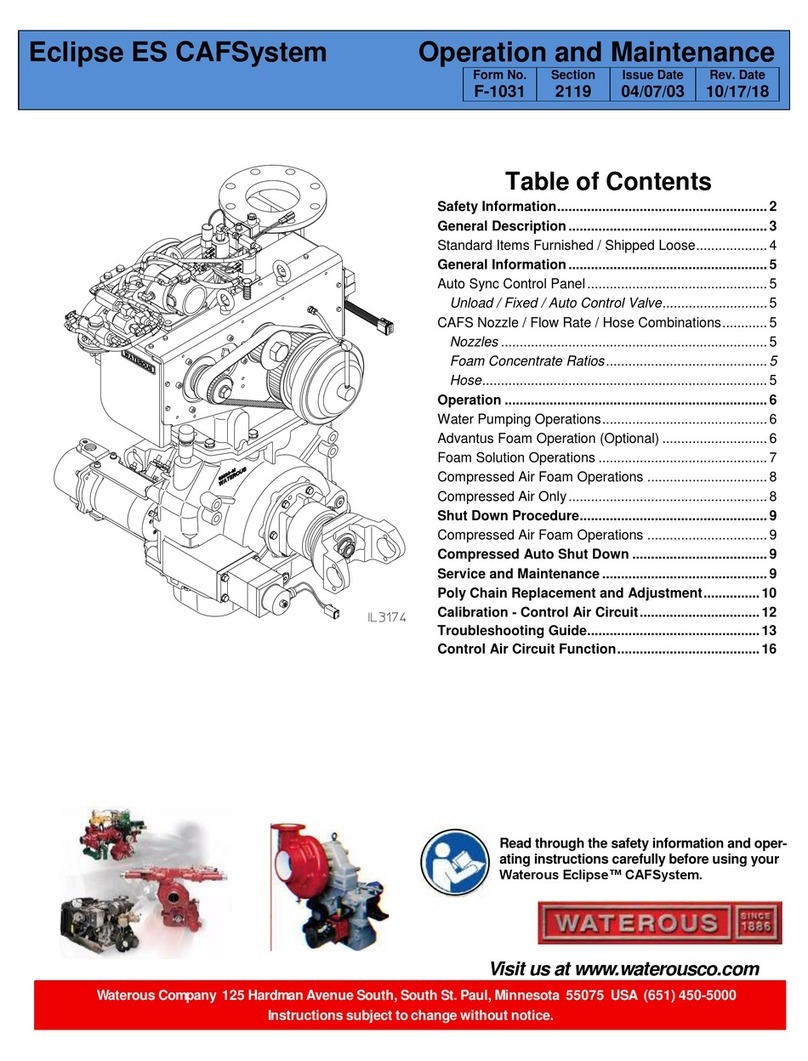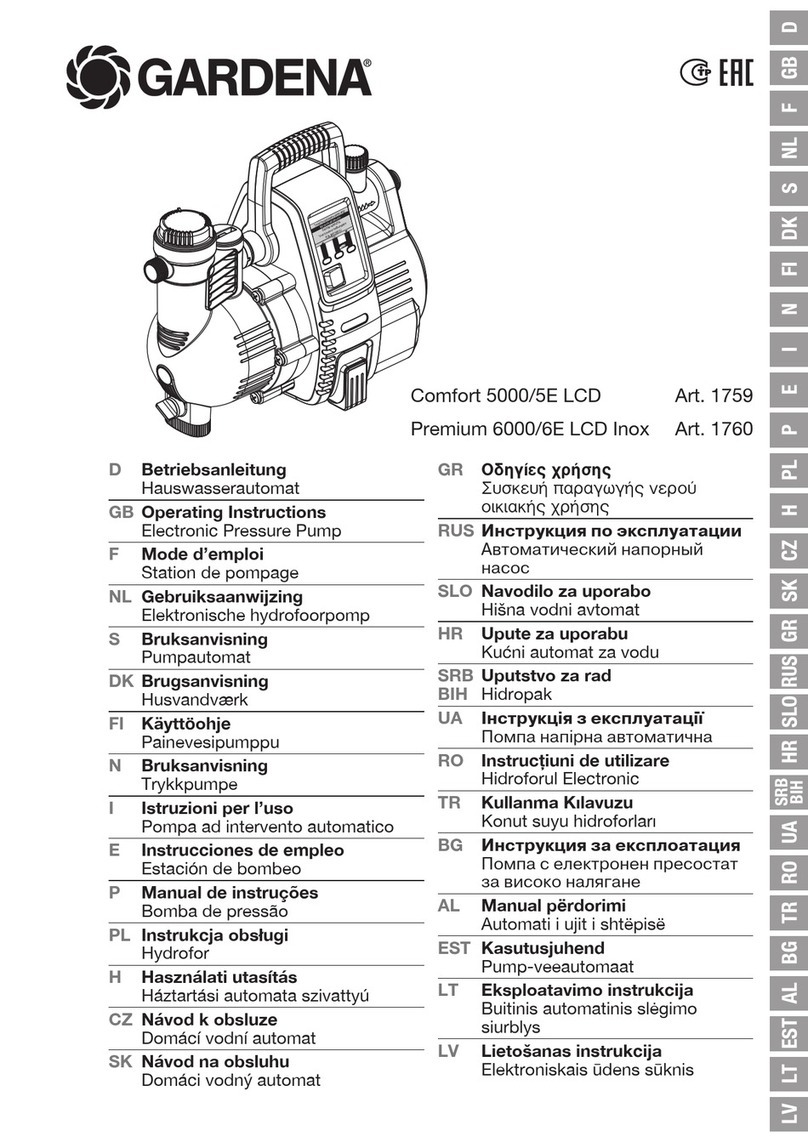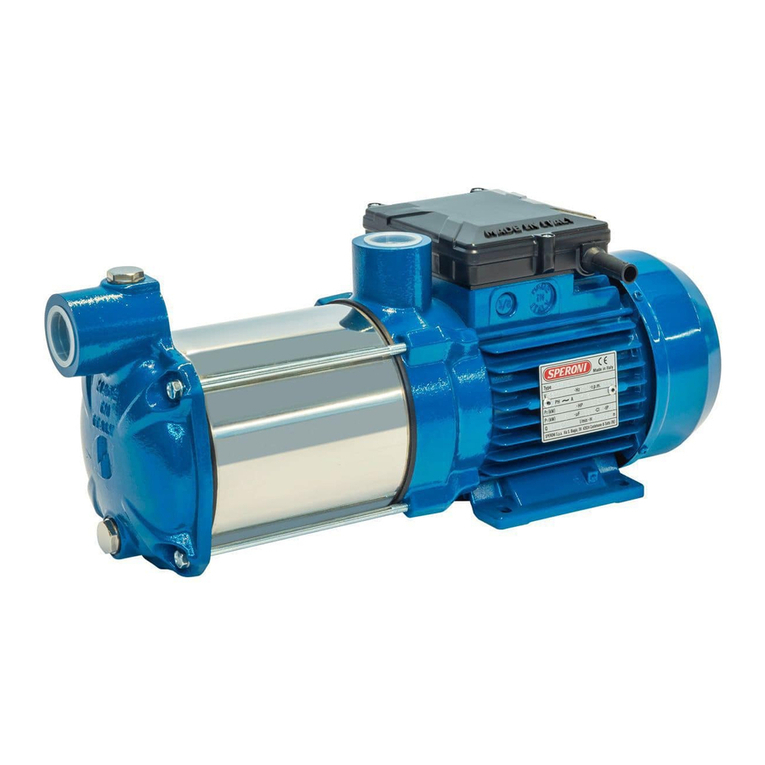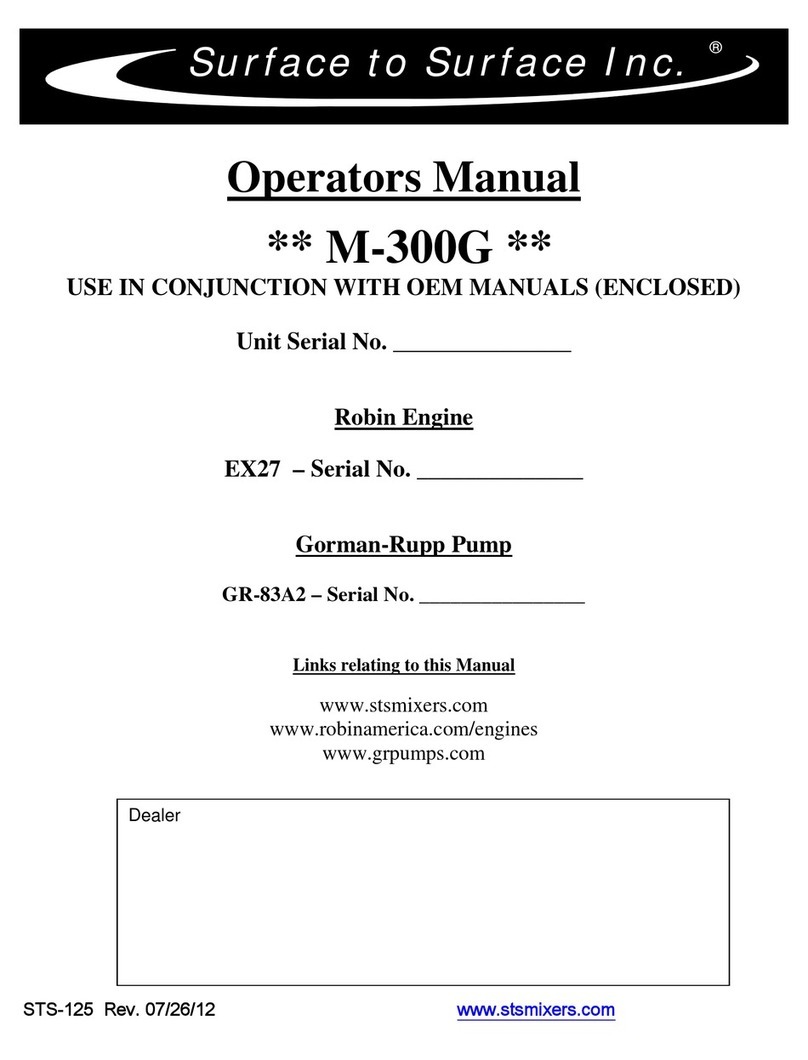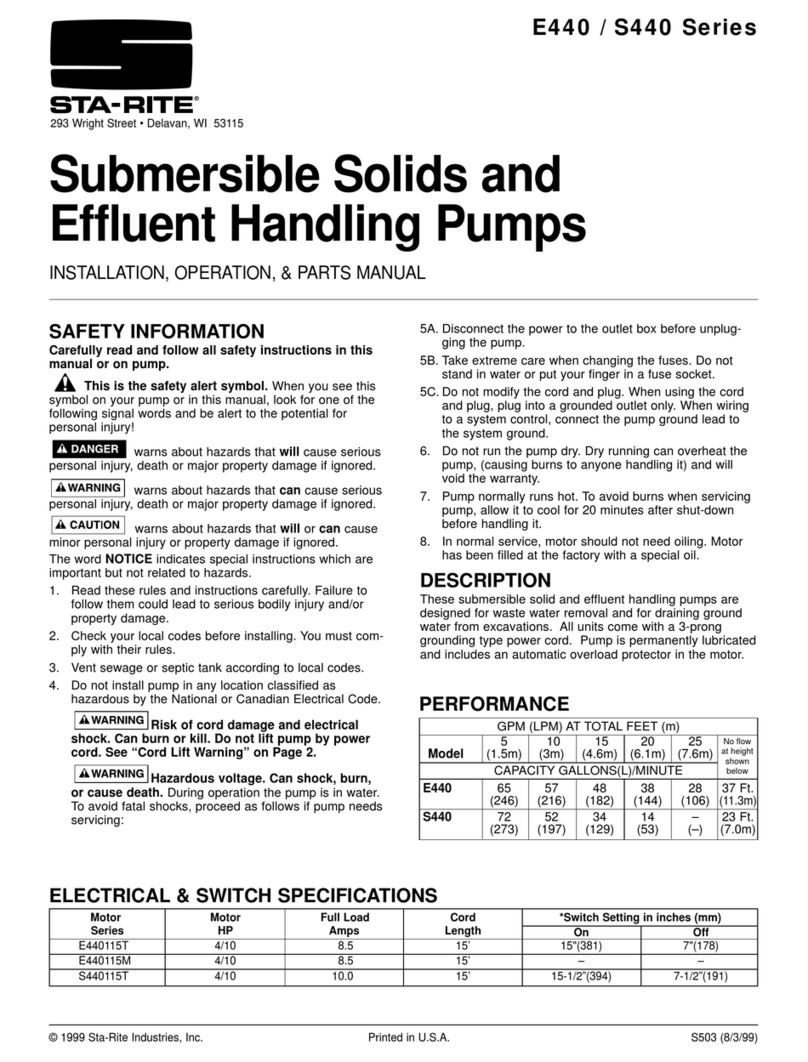INSPECTION Page 13 of 14
After the pump has been disassembled, check the following before reassembly:
Impeller Wear
1. Check the wear hubs on the impeller for excessive
wear,orclearancewiththewearrings.If the clear‐
ance exceeds 0.020/0.025in., or if the impeller hubs
are badly scored or grooved, replace the impeller and
wear ring.
2. Check all O-rings for cuts,nicks, or other damage.
Mechanical Seal
1. When a pump is disassembled, it is advisable to in‐
stallanewmechanicalsealduringreassembly,espe‐
cially if the pump had been in service for a long period
of time.
Reassembling thepumpis basicallythereverseofdisas‐
sembly. The following guidelines will help in reassembly.
1. Lubricate all O-rings when installing.
2. Checktheshaftsurfaceinthearea under theme‐
chanical seal bellows to be sure it is free of severe
scratches or other damage. Also check the impeller
hub in the area under the mechanical seal to be sure
it is free from scratches or other damage.
Oil Seals
Check theimpeller shaftanddrive shaft for signs of se‐
vere wear from the oil seal.
Ball Bearing, Gears and Needle Bearings
Check for severe wear and replace as necessary.
REASSEMBLING AND TESTING PUMP
2. When installing mechanical seal stationary ring, be
careful not to scratch the sealing surface that contacts
the polished primary ring.
3. If replacing a needle bearing, be sure the inner race
matches the bearing (the two pieces should be flush
when assembled).
Reassembling the Pump
1. Reassemblenewdriveplatetotheflywheel(ifneces‐
sary) and fasten engine adapter to the engine.
2. Fasten engine adapter to the face plate on the engine
using two of the M10 bolts to attach the starter motor.
3. Before installing an oil seal in a housing, apply a thin
coat of sealant to housing oil seal seat. (Waterous
recommends Loctite Ultra Blue RTV Silicon Sealant to
Permatex Super 300). Be sure that the seal, shaft and
gear case are clean. Always install a seal with the
seal lip facing in. Apply force to the outer edge of the
seal and press in evenly.
4. Position the gear case on the engine adapter and
replacethefoursocketheadcapscrewsandwash‐
ers. Inspect and replace washers as necessary.
5. Insert the key, gear (with press) and self locking nut
on the drive shaft.
Note: The impeller shaft/driven gear is nickel-
plated on the surfaces susceptible to corrosion. If
not careful when pressing on the ball bearing, this
nickel plating can chip or peel.
The following are suggested methods of installing
the ball bearing onto the impeller shaft:
1. Coat the inner diameter of the bearing and the
bearingsurfaceoftheshaftwithhighpres‐
sure
grease.Placethebearingonaflat sur‐
faceand
inserttheshaft,squarewiththebear‐
ing, into
the bearing. Press with a light force untilthe
bearingandshafthavealignedprop‐
erly, then
fully press on the bearing to the shoulder on
the shaft.
2. Place the impeller shaft in a freeze
0
r until the
6. Place the needle bearing inner race on the end of the shaft temperature stabilizes at 20 F or less.
drive shaft (tapered end facing out) if it was removed.
7. Slide the splined end of the drive shaft assembly (with
Texaco® 1912 Coupling Grease applied) into the drive
plate. Be sure the pilot diameter on the shaft goes into
the pilot bore in the flywheel.
Remove shaft from freezer, grease bearing
surface of shaft and quickly place bearing
onto shaft. The bearing should slide onto shaft
freely or with a very light force, until bearing
rests against the shaft shoulder. Allow shaft
tositfora few minutes atroom temper‐
ature
before installing in pump.
3. Warm the bearing with even heat,
0
i.e. hot
plate, to a temperature of 250-300 F (hot to
8. Install the mechanical seal stationary ring and oil seal
and wear ring in the gear case cover. Install stationary
ring with chamfered edge facing gear case, being
careful not to scratch the sealing surface.
Clean stationary ring sealing surface with a soft
cloth and denatured alcohol.
9. Reassemble impeller shaft assembly if required.
the touch). With the shaft surface greased,
quickly place the bearing (handle with gloves
or oven mitt) onto the shaft until it rests
against the shaft shoulder. Allow bearing to
cool until it can be handled without gloves.
Note:DONOTuseanopenflameormi‐
crowave to heat bearing.
















